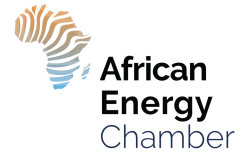Indonesia has unveiled a package of steps to help Tanzania to unleash the tourism potential, as it seeks close ties with the resource-rich country.
In his maiden interaction with the members of Tanzania Association of Tour Operators (TATO) in Arusha, Indonesian Ambassador to Tanzania, Prof. Ratlan Pardede vowed to work with the government to attract massive Indonesian tourists.
“I will promote Tanzania’s abundant tourist attractions back home and encourage youths to come and explore the country as part of the strategy to boost tourism” Prof. Pardede told the TATO members.
The Indonesian diplomat who recently sampled Serengeti, the Tanzania’s flagship national park, said he would also foster a strong link between TATO and Association of the Indonesian Tours and Travel Agencies (ASITA) to work together in promoting both countries for mutual benefits.
Tanzania’s Serengeti National Park is Africa’s best safari park because of to the sheer numbers, variety of wildlife, abundance of predators and spectacular wildebeest migration.
According to the latest ratings by safari travellers and African travel experts, Serengeti National Park polled 4.9 out of 5, emerging the winner.
TATO Chief Executive Officer, Mr Sirili Akko who spearheaded the talks said idea behind the interaction was part of comprehensive approach to promote Tanzania’s tourist attractions in Asia, the biggest emerging travel and tourism market.
Mr Akko further said that TATO has resolved to diversify its tourist market from the long-established sources of western countries and a few African counterparts.
Lack of direct flights between Dar es Salaam and Jakarta coupled with little information on tourist attractions in Tanzania among Indonesians, have been cited as among factors leading to few tourists from the Southeast Asian country.
However, the Indonesian Embassy in Dar es Salaam are upbeat that there could be an increase of between two and five per cent in the coming years from the current 350 travelers from Indonesia.
Indonesia’s tourism industry is booming, Prof. Pardede said, adding that the country’s visa-free policy is one of the secrets behind the tourism thriving.
In 2017, the country welcomed over 14 million overseas visitors an increase of more than 2 million from the previous year.
This rapid increase in visitors, and the billions of dollars in foreign currency flowing with them, seems likely to continue.
This is not mere happenstance, but rather the result of a coordinated and strategic government effort to drive growth in the industry.
In 2015 the Ministry of Tourism set a goal of 20 million foreign visitors by 2019.
At the time, with numbers hovering around 9 million, this appeared to be an optimistic target but the most recent data suggests they are on pace to achieve it or come very close.
The question then is what’s driving this rapid growth?
The answer seems fairly clear: with the election of Joko Widodo, popularly known as Jokowi, the government set clear benchmarks for what it wanted to accomplish in the tourism sector, then designed and implemented a multipronged effort to achieve those goals.
These efforts have been helped by a weakening rupiah, which increases Indonesia’s allure as an affordable tourist destination.
But that is only a one part of a bigger picture which includes multifaceted efforts to restructure the Ministry of Tourism, market Indonesia more aggressively as a tourist destination, enact regulatory reforms to attract investment, and target strategic destinations outside of Bali for development and promotion.
Since the program kicked off in 2015, the industry has grown by leaps and bounds, generating a flurry of economic activity and creating hundreds of thousands of jobs.
In 2015, the ministry rolled out a new 5-year strategic plan setting clear goals for itself to achieve by 2019.
These included the 20 million-visitor numbers, as well as attracting Rupiah. 240 trillion ($17.2 billion) in foreign exchange, employing 13 million people in the industry and boosting the sector’s contribution to national GDP to 8 percent.
To accomplish these goals, the ministry was first overhauled. Prior to 2015, tourism development and promotion were grouped under the umbrella of the Ministry of Tourism and Creative Economy, meaning that in addition to tourism promotion, the ministry was also engaged in financing and producing films, art and music that represented Indonesian culture and society.
The 2015 restructure spun off the creative economy activities, allowing the ministry to focus more narrowly on only the development and marketing of tourist destinations.
Along with this narrower mandate, it also received a significant budget increase. For instance, the budget for overseas marketing in 2016 was Rupiah 1.777 trillion ($127 million), which is more than the entire ministerial budget for 2014.
















